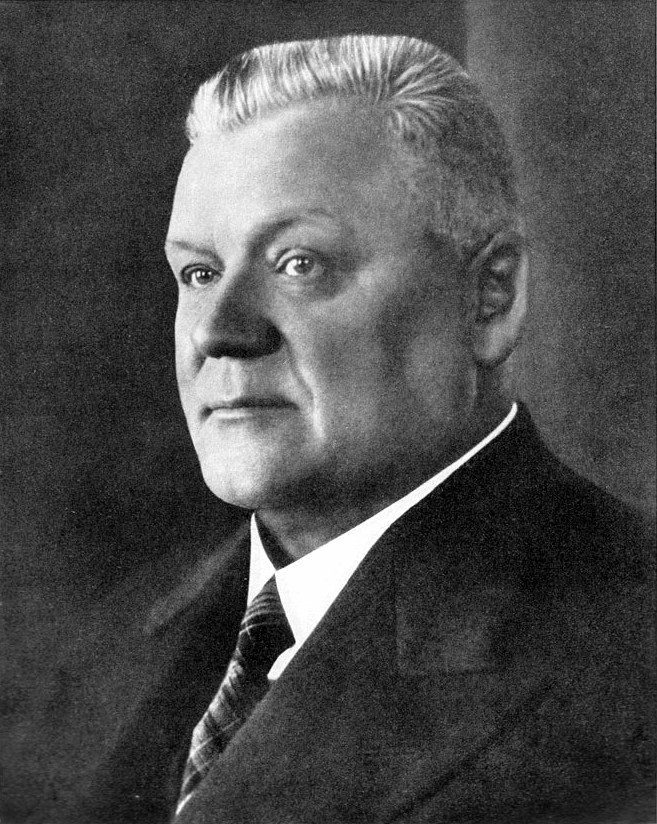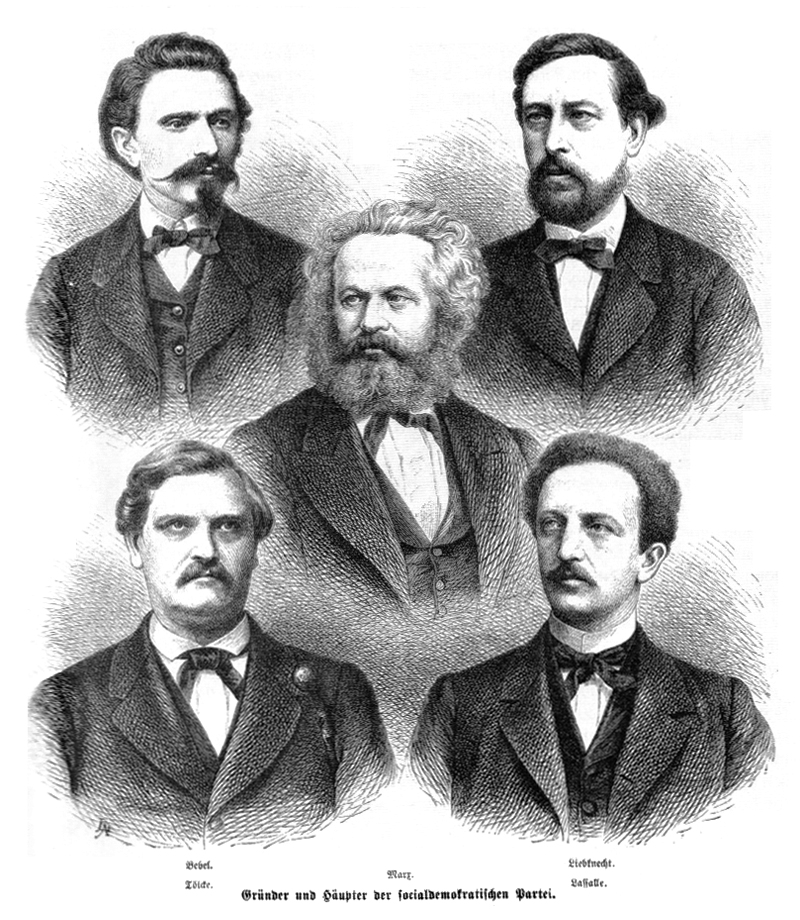|
Marģers Skujenieks
Marģers Skujenieks (22 June 1886 – 12 July 1941) held the office of Prime Minister of Latvia twice from 19 December 1926 – 23 January 1928 and 6 December 1931 – 23 March 1933. Early life Skujenieks was born in Riga, into the family of Vensku Edvarts (real name Eduards Skujenieks), a notable publicist and a poet, and Luīze Skujeniece (daughter of Juris Alunāns), the first female Latvian theatre critic. His sister was actress and poet Biruta Skujeniece. After studies in Jelgava and Rīga he studied economics at the Moscow Commerce institute. Skujenieks became a Social Democrat in 1903, but he never supported the concept of international class struggle, where nationality would be of no importance. Instead, he was one of the early proponents of Latvian national unity. After the suppression of the 1905 Russian Revolution he was forced to emigrate to London in 1906, but in 1907 was allowed to return to the Russian Empire and went on to study economics at the Moscow Commerci ... [...More Info...] [...Related Items...] OR: [Wikipedia] [Google] [Baidu] |
Prime Minister Of Latvia
The prime minister of Latvia () is the most powerful member of the Government of Latvia, who presides over the Latvian Cabinet of Ministers. The officeholder is nominated by the president of Latvia, but must be able to obtain the support of a parliamentary majority in the Saeima The Saeima () is the parliament of the Latvia, Republic of Latvia. It is a unicameral parliament consisting of 100 members who are elected by proportional representation, with seats allocated to political parties which gain at least 5% of the p .... The tables below display all Latvian prime ministers from both the first period of Latvian independence (1918–1940) and since the country regained its independence (1990–present). From 1990 to 6 July 1993, the head of government was known as the chairman of the Council of Ministers. A direct translation of the official Latvian term is minister-president. Although the equivalent is used in some European languages, it is not used conventionally in En ... [...More Info...] [...Related Items...] OR: [Wikipedia] [Google] [Baidu] |
Flag Of Latvia
The national flag of Latvia () was used by independent Latvia from 1918 until the country was Soviet occupation of Latvia in 1940, occupied by the Soviet Union in 1940. Its use was suppressed during Soviet rule. On 27 February 1990, shortly before the country On the Restoration of Independence of the Republic of Latvia, regained its independence, the Latvian government re-adopted the traditional red-white-red flag. Though officially adopted in 1921, the Latvian flag was used in as early as the 13th century, according to the ''Rhymed Chronicle of Livonia''. The red colour is sometimes described as symbolizing the readiness of the Latvians to give the blood from their hearts for freedom and their willingness to defend their sovereignty. An alternative interpretation is that a Latgalian leader was wounded in battle, and the sheet on which he was laid on was stained by his blood with only the centre stripe of the sheet being left unstained. This story is similar to the legend of the o ... [...More Info...] [...Related Items...] OR: [Wikipedia] [Google] [Baidu] |
Tautas Padome
The People's Council of Latvia (, LTP) was a temporary council which declared Latvia's independence on November 18, 1918 and then acted as the temporary parliament of the country until a Constitutional Assembly was elected. The People's Council was formed on November 17, 1918 as a result of merging two councils of Latvian organizations: Latvian Provisional National Council ('','' LPNP) and the Democratic Bloc. Originally, the People's Council had 40 members representing all the major Latvian political organizations, except the far right and the far left (communists). It was later expanded to 245 representatives. On November 18, 1918, the People's Council declared Latvia an independent country at the now National Theatre of Latvia. It chose Jānis Čakste as the President of the Council and Kārlis Ulmanis as the Prime Minister A prime minister or chief of cabinet is the head of the cabinet and the leader of the ministers in the executive branch of government, often in ... [...More Info...] [...Related Items...] OR: [Wikipedia] [Google] [Baidu] |
Democratic Bloc (Latvia)
{{disambiguation ...
Democratic Bloc may refer to: *Democratic Bloc (Bahrain) * Democratic Bloc (Czech Republic) *Democratic Bloc (East Germany) * Democratic Bloc (Eritrea) * Democratic Bloc (Estonia) * Democratic Bloc (Latvia) * Democratic Bloc (Poland) *Democratic Bloc (Ukraine) The Democratic Bloc (; ''Demokratychnyi Blok'') was a political alliance and an electoral bloc in Ukraine founded during the election campaign to participate in the parliamentary election held in March 1990. History The elections in the spring o ... [...More Info...] [...Related Items...] OR: [Wikipedia] [Google] [Baidu] |
Lenin
Vladimir Ilyich Ulyanov ( 187021 January 1924), better known as Vladimir Lenin, was a Russian revolutionary, politician and political theorist. He was the first head of government of Soviet Russia from 1917 until Death and state funeral of Vladimir Lenin, his death in 1924, and of the Soviet Union from 1922 until his death. As the founder and leader of the Bolsheviks, Lenin led the October Revolution which established the world's first socialist state. His government won the Russian Civil War and created a one-party state under the Communist Party of the Soviet Union, Communist Party. Ideologically a Marxist, his developments to the ideology are called Leninism. Born into a middle-class family in Simbirsk in the Russian Empire, Lenin embraced revolutionary socialist politics after Aleksandr Ulyanov, his brother was executed in 1887 for plotting to assassinate Alexander III of Russia, the tsar. He was expelled from Kazan Imperial University for participating in student prote ... [...More Info...] [...Related Items...] OR: [Wikipedia] [Google] [Baidu] |
1905 Russian Revolution
The Russian Revolution of 1905, also known as the First Russian Revolution, was a revolution in the Russian Empire which began on 22 January 1905 and led to the establishment of a constitutional monarchy under the Russian Constitution of 1906, the country's first. The revolution was characterized by mass political and social unrest including worker strike action, strikes, peasant revolts, and military mutiny, mutinies directed against Tsar Nicholas II and the Tsarist autocracy, autocracy, who were forced to establish the State Duma (Russian Empire), State Duma legislative assembly and grant certain rights, though both were later undermined. In the years leading up to the revolution, impoverished peasants had become increasingly angered by repression from their Landlord, landlords and the continuation of semi-feudal relations. Further discontent grew due to mounting Russian losses in the Russo-Japanese War, poor conditions for workers, and urban unemployment. On , known as "Bloody ... [...More Info...] [...Related Items...] OR: [Wikipedia] [Google] [Baidu] |
Social Democrat
Social democracy is a Social philosophy, social, Economic ideology, economic, and political philosophy within socialism that supports Democracy, political and economic democracy and a gradualist, reformist, and democratic approach toward achieving social equality. In modern practice, social democracy has taken the form of predominantly capitalist economies, a robust welfare state, policies promoting social justice, market regulation, and a more Redistribution of income and wealth, equitable distribution of income. Social democracy maintains a commitment to Representative democracy, representative and participatory democracy. Common aims include curbing Social inequality, inequality, eliminating the oppression of Social privilege, underprivileged groups, eradicating poverty, and upholding universally accessible public services such as child care, Universal education, education, elderly care, Universal health care, health care, and workers' compensation. Economically, it support ... [...More Info...] [...Related Items...] OR: [Wikipedia] [Google] [Baidu] |
Plekhanov Russian University Of Economics
The Plekhanov Russian University of Economics () is a public research university in Moscow, Russia. It was founded in 1907 by entrepreneur Alexei Vishnyakov as the first finance-specialized college in the Russian Empire. In addition to accreditation by the Ministry of Education, the university had accreditation from the Association of Chartered Certified Accountants, European Council for Business Education and the Association of MBAs. PRUE is also a member of the European University Association (suspended in 2022 due to the 2022 Russian invasion of Ukraine), and the European Foundation for Management Development. The Plekhanov Russian University of Economics changed its name more than once: Moscow Commercial Institute (1907–1919); Karl Marx Moscow Institute of the National Economy (1919–1924); Plekhanov Moscow Institute of the National Economy (1924–1991); Plekhanov Russian Academy of Economics (1992–2010); Plekhanov Russian University of Economics (2010 to present) ... [...More Info...] [...Related Items...] OR: [Wikipedia] [Google] [Baidu] |
Jelgava
Jelgava () is a state city in central Latvia. It is located about southwest of Riga. It is the largest town in the Semigallia region of Latvia. Jelgava was the capital of the united Duchy of Courland and Semigallia (1578–1795) and was the administrative center of the Courland Governorate (1795–1918). Jelgava is situated on a fertile plain rising only above mean sea level on the right bank of the river Lielupe. At high water, the plain and sometimes the town as well can be flooded. It is a railway center, and is also a host to the Jelgava Air Base. Its importance as a railway centre can be seen by the fact that it lies at the junction of over 6 railway lines connecting Riga to Lithuania, eastern and western Latvia, and Lithuania to the Baltic Sea. Name Until 1917, the city was officially referred to as Mitau. The name of Jelgava is believed to be derived from the Livonian word ''jālgab'', meaning "town on the river." The origin of the German name ''Mitau'' is unclea ... [...More Info...] [...Related Items...] OR: [Wikipedia] [Google] [Baidu] |
Biruta Skujeniece
Beirut ( ; ) is the Capital city, capital and largest city of Lebanon. , Greater Beirut has a population of 2.5 million, just under half of Lebanon's population, which makes it the List of largest cities in the Levant region by population, fourth-largest city in the Levant region and the List of largest cities in the Arab world, sixteenth-largest in the Arab world. The city is situated on a peninsula at the midpoint of Lebanon's Mediterranean Sea, Mediterranean coast. Beirut has been inhabited for more than 5,000 years, making it one of the List of oldest continuously inhabited cities, oldest cities in the world. Beirut is Lebanon's seat of government and plays a central role in the Economy of Lebanon, Lebanese economy, with many banks and corporations based in the city. Beirut is an important Port of Beirut, seaport for the country and region, and rated a Global City, Beta- World City by the Globalization and World Cities Research Network. Beirut was severely damaged by ... [...More Info...] [...Related Items...] OR: [Wikipedia] [Google] [Baidu] |





